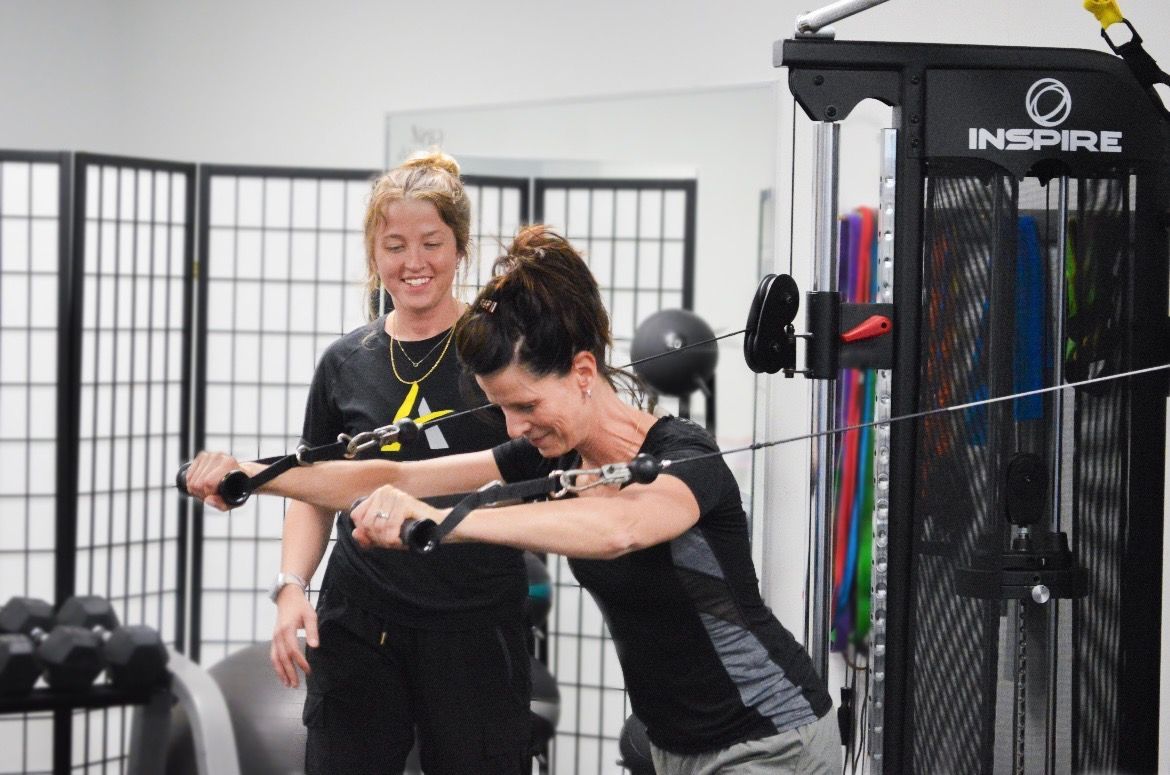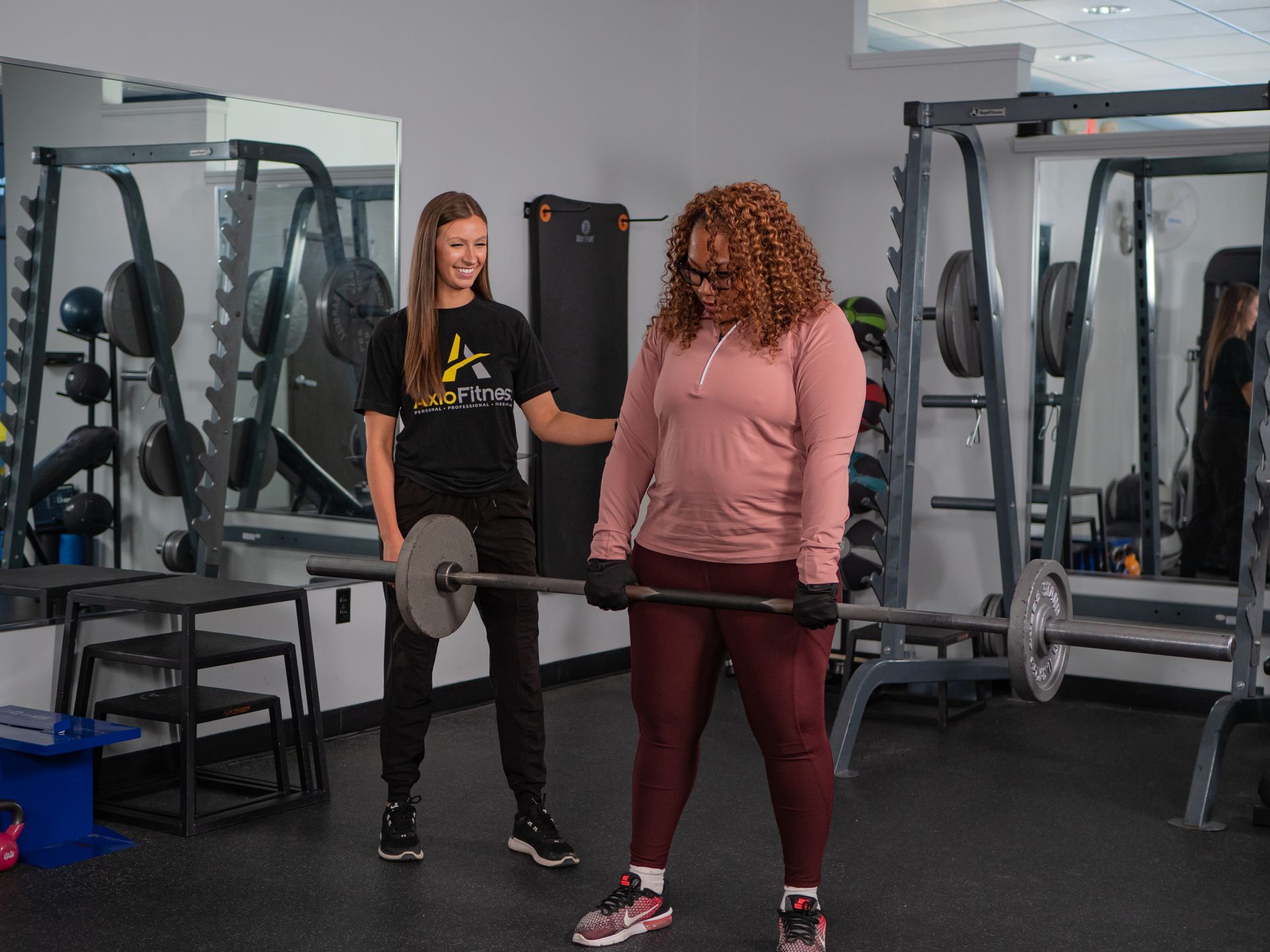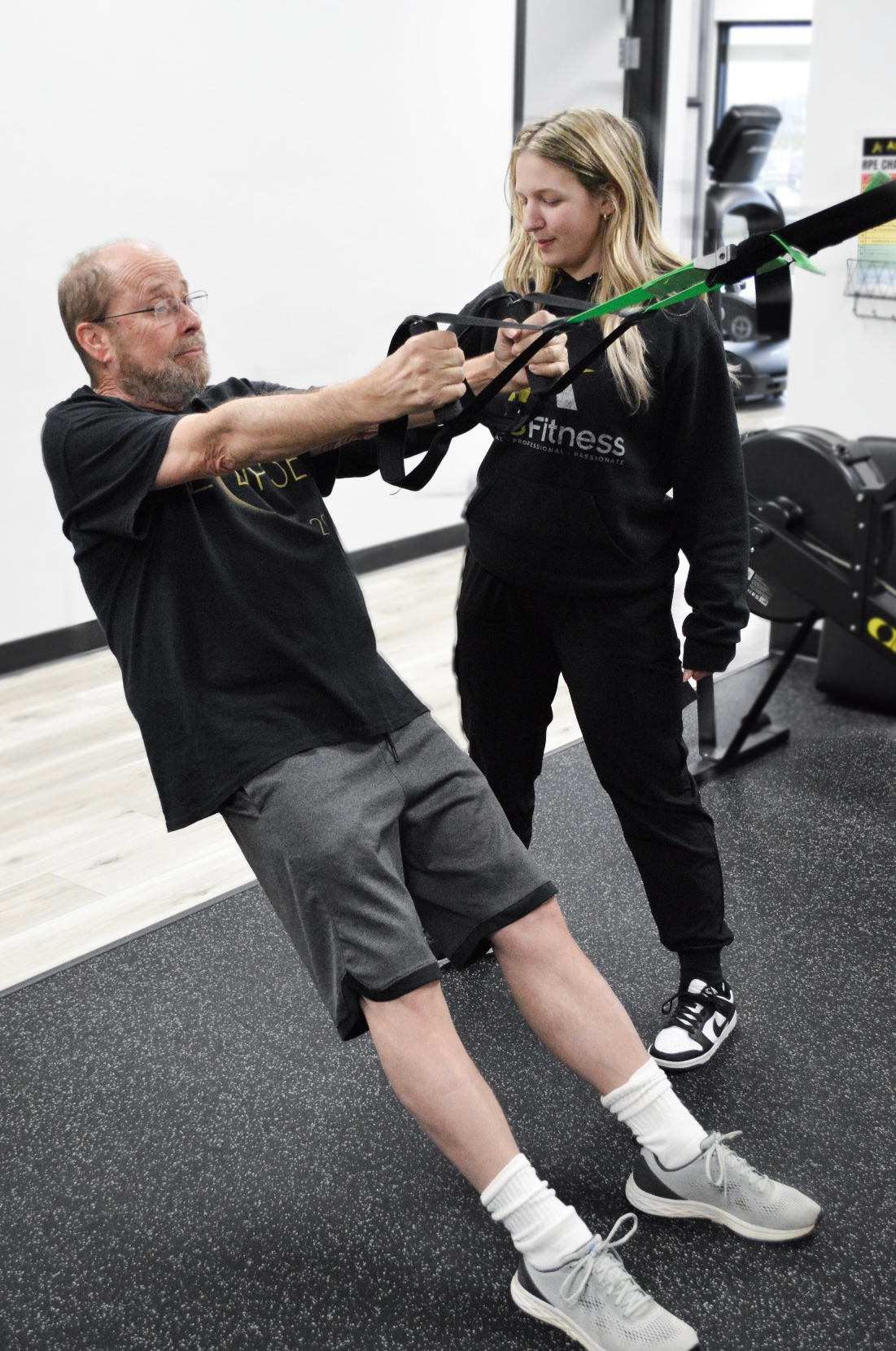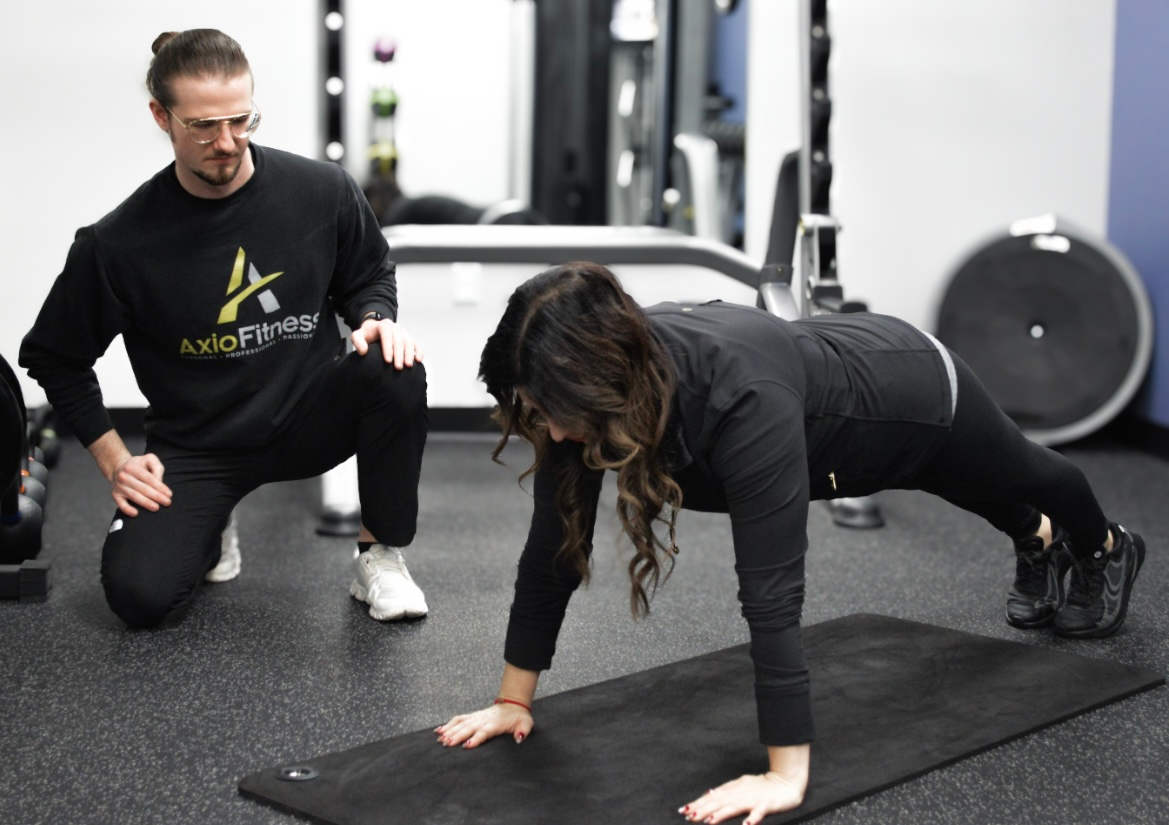WELCOME TO
Our Blog


Exercise boosts self-esteem through several key psychological, physiological, and social mechanisms. Here's a breakdown of why and how it has such a strong positive impact on how you view yourself: 1. Sense of Accomplishment Why it matters: Completing a workout, reaching a fitness goal, or simply showing up when you didn’t feel like it reinforces a sense of achievement. Effect: Builds confidence in your abilities and fosters a “can-do” attitude. 2. Physical Changes You Can See or Feel Why it matters: Regular exercise often leads to improved posture, muscle tone, weight management, and energy levels. Effect: Feeling stronger, fitter, or more energetic can make you feel better about your appearance and physical capabilities. 3. Improved Body Image Why it matters: Exercise helps people feel more connected to their bodies and appreciate what they can do—not just how they look. Effect: Greater body acceptance, which boosts self-respect and self-worth. 4. Mastery and Progress Why it matters: Learning new skills (e.g., lifting weights, yoga poses, running longer distances) builds a sense of personal mastery. Effect: Feeling competent and skilled translates to confidence in other areas of life. 5. Positive Feedback Loop Why it matters: Feeling better emotionally after exercising reinforces the behavior and improves self-trust. Effect: You begin to believe in your ability to make positive choices for yourself. If you need the accountability and support to get started on an exercise routine, Axio Fitness is here to help!

Golf season in Ohio has finally arrived! Here are four effective exercises for golfers that target mobility, stability, and power — all crucial for an efficient and injury-free golf swing: 1. Rotational Medicine Ball Throws Purpose : Builds rotational power for stronger swings. How to Do It : Stand sideways a few feet from a wall. Hold a medicine ball at waist height. Rotate your torso and hips away from the wall, then explosively rotate toward it, throwing the ball against the wall. Catch and repeat. 2. Lunge with Rotation Purpose : Improves leg and core strength and hip mobility for better turn in your backswing and follow-through. How to Do It : Start in the lunge position with one foot forward, and one behind while both knees are bent about 90 degrees. Keep your back tall and rotate your body towards the side of your front leg. Push off your front leg and return to a standing position to switch legs. 3. Deadbugs Purpose : Strengthens the core while promoting spinal stability — essential for maintaining posture during the swing. How to Do It : Lie on your back with arms and legs up. Lower opposite arm and leg slowly while keeping your back flat on the floor. Return to start and alternate sides. 4. Single-Leg Romanian Deadlifts Purpose : Enhances balance and glute/hamstring strength for better control and lower body stability. How to Do It : Stand on one leg with a slight knee bend. Hinge at the hip and lower your torso while extending the other leg back. Keep your back flat and return to standing. If you need help with proper exercises, or you need accountability to stay consistent with golf exercises, Axio Fitness is here to help!

Have you ever heard the phrase “sitting is the new smoking”? Well, I tend to agree with that. In our modern culture, we all sit way too much. Most of us have desk jobs and hardly move more than our fingers and thumbs for hours at a time. And beyond our sedentary jobs, there is a tremendous lack of activity in our free time and social lives. Before we could stream an endless number of shows, movies and documentaries, our free time consisted of dancing, roller skating, racquetball leagues, push-mowing our yards, or cleaning our own windows and gutters. For many of us these days, we not only sit way too much at our jobs, but we sit way too much when we aren’t at work. Sitting too long can negatively affect your health in several ways. Here are three key reasons: 1. Increased Risk of Chronic Diseases: Prolonged sitting is linked to a higher risk of heart disease, type 2 diabetes, and certain cancers. It can lead to poor blood circulation and insulin resistance, even in people who exercise regularly. 2. Muscle Weakness and Poor Posture: Sitting for extended periods, especially with poor posture, can weaken core muscles, hip flexors, and glutes. Over time, this can lead to back and neck pain as well as decreased mobility. 3. Mental Health Effects: Extended sedentary behavior is associated with increased feelings of anxiety and depression. Physical movement supports the release of mood-regulating chemicals like endorphins, which are reduced during long sedentary periods. To mitigate these risks, you should exercise daily but also get up and walk or move around every 30-60 minutes. Be mindful of how much you’re sitting throughout the day and be intentional about more movement. If you need help and accountability to get moving, Axio Fitness is here for you!

“I know what to eat, I just don’t do it.” If I had a dime for every time a client has told us that, I’d be retired on a yacht somewhere! Our Axio Nutrition program is a way to help our clients get better results. Whenever we present it to our clients, this is the pushback we get. But what clients are telling us is that they need to be held accountable to better food choices. As I always say, Axio Nutrition is about 90% accountability and the rest is education, recipe ideas, or food choice suggestions. But we are in the accountability business and we do our best to not let our clients down in this way. One of the most effective ways we hold clients accountable is by having them journal or record their food intake. Journaling what you eat can be surprisingly powerful—here are the top three benefits: Increased Awareness – You become more conscious of what, when, and why you eat, which can highlight habits you didn’t realize you had (like snacking out of boredom). Better Nutritional Choices – When you see everything laid out, it’s easier to spot imbalances (like too little protein or too much sugar), helping you make healthier decisions. Tracking Progress Toward Goals – Whether you're trying to lose weight, build muscle, or manage a condition like diabetes, food journaling gives you real data to track trends and progress. Our clients are also afraid that we’ll tell them to never eat pizza or drink wine again. Which is not the case either. It’s all about balance but also making better choices more often to achieve better health. If you need professional accountability to get on track with your nutrition, Axio Fitness is here to help!

Hinging exercises, like the deadlift, kettlebell swing, and hip thrust, are highly effective movements that offer a variety of benefits. Here are some of the key advantages of incorporating hinging exercises into your workout routine: 1. Improves Posterior Chain Strength Hinging exercises primarily target the muscles of the posterior chain, including the hamstrings, glutes, lower back, and calves. Strengthening these muscles is crucial for overall athletic performance and can help improve posture. 2. Enhances Hip Mobility Hinging motions require a significant amount of hip flexion and extension. Regular practice can help improve hip mobility and flexibility, which can prevent stiffness and reduce the risk of injury in daily activities or sports. 3. Core Activation Although hinging exercises mainly focus on the lower body, they also engage the core muscles (abdominals, obliques, and lower back). The need to stabilize the torso throughout the movement helps strengthen the core and improve overall stability. 4. Functional Movement The hinge is a natural and functional movement pattern that mimics daily activities like picking up objects from the floor, squatting, or bending. Mastering the hinge improves your ability to perform daily tasks with proper technique and reduces strain on the lower back. 5. Posture Improvement Many people struggle with poor posture due to sitting for long periods. Hinging exercises strengthen the muscles that support an upright posture, such as the lower back and glutes, and can help correct imbalances caused by prolonged sitting. 6. Lower Back Strengthening While it’s essential to perform hinging exercises with proper form, they can help strengthen the lower back muscles, providing support and protection for the spine. A strong lower back can reduce the risk of injuries and alleviate discomfort. 7. Burns Calories and Fat Many hinging exercises, such as kettlebell swings, are dynamic and can increase heart rate, contributing to calorie burn. Incorporating these into high-intensity training can help with fat loss while building strength. Incorporating hinging exercises into your workout can greatly enhance overall fitness, reduce the risk of injury, and improve functional strength. Proper form and progression are key to maximizing these benefits. At Axio Fitness, we include hinging exercises in our workout programs for all our clients. If you need help doing the right exercises and doing them properly, we are here to help.

I have always had to remind our clients that exercise is not punishment! Exercise isn’t something dreadful you must do because you eat poorly or because you hate the way your pants fit. If you view exercise as a punishment for something you do or how you feel, you’ll never turn it into a lifestyle. An active lifestyle is a way and not a place. Everyone needs to be physically active no matter what they eat or how their pants fit. Therefore, you should exercise to celebrate the things you can do and enjoy the benefits of being active. In the beginning, there are usually no workouts that are enjoyable. But as you see progress and gain confidence, you’ll find that even the activity you used to dread can be enjoyable. But, if there are certain exercise routines or a specific form of cardio that you have tried and you just hate doing it, then don’t do it! There are so many great ways to get active, no one should have to force themselves to do things they don’t enjoy. So, think about what types of exercises and workouts you find fun, and prioritize those. If you need help getting started or finding workouts you enjoy, Axio Fitness is here to help!

When most people think of core strength, they likely picture well-defined abs or the "six-pack" look. While aesthetics can be a motivating factor for many, the importance of a strong core goes far beyond just appearance. Core strength is vital for overall health, physical performance, and injury prevention. Whether you're an athlete or someone simply looking to improve daily function, understanding and building core strength is a key factor for a healthier, more active lifestyle. What is Core Strength? Your core consists of the muscles in your abdomen, lower back, hips, and pelvis. These muscles work together to support your spine, maintain your balance, and help you move efficiently. When we talk about "core strength," we refer to the ability of these muscles to work together to stabilize and support your body, especially during movement. While your abdominals are a part of your core, your lower back, obliques (side muscles), and glutes (buttocks) play just as important roles. This interconnected system of muscles allows for better posture, proper alignment, and smooth, controlled movement during physical activity. Here are Four Reasons Why Core Strength is Important: Improved Posture Having a strong core is crucial for maintaining good posture. When your core muscles are weak, other muscles in your body, such as those in your back and shoulders, may compensate for the lack of stability, leading to poor posture. Over time, this can cause discomfort and increase the risk of strain or injury. Better Balance and Stability Your core is central to your body's ability to balance and stabilize itself. If you're engaging in physical activities such as running, cycling, or even walking, your core muscles are responsible for helping you stay upright and maintain control over your movements. Without a strong core, you may feel unstable or off-balance, increasing the risk of falls and injuries. 3. Injury Prevention One of the most important reasons to focus on core strength is injury prevention. A weak core leaves the body vulnerable to strains, sprains, and overuse injuries. For instance, lower back pain is a common issue associated with weak core muscles. When your core isn't strong enough to support your spine and pelvis, excess stress is placed on other parts of your body, particularly your lower back. By strengthening your core, you provide better support for your spine and joints, reducing the risk of injury during everyday activities, exercise, or sports. 4. Everyday Functionality Core strength isn’t just about performance in sports or fitness. It directly affects your ability to perform everyday tasks with ease. From lifting groceries to bending over to tie your shoes, your core muscles are engaged in nearly every movement you make. The stronger your core, the easier and safer these everyday actions become. For seniors or people with mobility challenges, building core strength can also be a game-changer. A strong core improves balance, reduces the risk of falls, and can help maintain independence longer into life. If you need some accountability or guidance to make core strength a priority in your fitness routine, Axio Fitness is here to help!

Ozempic (semaglutide) has gained significant attention in recent years, primarily for its effectiveness in treating type 2 diabetes and its potential for weight loss. The medication, which belongs to a class of drugs known as GLP-1 receptor agonists, works by mimicking a hormone that helps regulate blood sugar and appetite. While it has been hailed as a breakthrough for many, it's important to understand that, like all medications, Ozempic comes with its own set of risks and potential side effects. 1. Gastrointestinal Issues One of the most common and well-known side effects of Ozempic is gastrointestinal discomfort. Many users experience nausea, vomiting, diarrhea, or constipation when starting the medication. For some, these symptoms can be severe enough to disrupt daily activities. The reason for this is that the medication slows down the movement of food through the digestive system, which can lead to these uncomfortable symptoms. In most cases, these side effects are temporary and may diminish over time as the body adjusts to the medication. However, for some people, these issues can persist, making it necessary to reconsider whether Ozempic is the right treatment option. 2. Risk of Pancreatitis Ozempic, like other GLP-1 receptor agonists, has been associated with a small but serious risk of pancreatitis (inflammation of the pancreas). Symptoms of pancreatitis include severe abdominal pain, nausea, and vomiting. If left untreated, pancreatitis can be life-threatening. While the risk is relatively low, patients who have a history of pancreatitis or other pancreatic issues may need to avoid Ozempic or be closely monitored while using it. If you experience any of the symptoms of pancreatitis while on Ozempic, it’s important to seek medical attention immediately. 3. Kidney Concerns There have been reports linking the use of Ozempic to potential kidney issues, particularly in individuals who already have pre-existing kidney problems. The medication may exacerbate kidney function decline in some patients, leading to dehydration, kidney failure, or other related complications. Signs of kidney problems include swelling in the feet or ankles, fatigue, and changes in urination patterns. If you experience any of these symptoms, it’s crucial to talk to your doctor about adjusting your treatment plan or exploring alternative options. 6. Allergic Reactions Like any medication, Ozempic can cause allergic reactions in some individuals. Symptoms of an allergic reaction may include rash, itching, swelling, difficulty breathing, or tightness in the chest. If you experience any of these symptoms, it’s crucial to stop using Ozempic and seek immediate medical attention. 7. Potential for Misuse for Weight Loss While Ozempic has been proven to help with weight loss, particularly in individuals with type 2 diabetes, it is important to remember that it is not FDA-approved solely for weight loss in individuals without diabetes. Some people may misuse Ozempic as a weight loss drug, which could lead to unintended health consequences, particularly if they do not have the necessary medical oversight. Taking Ozempic for weight loss without proper supervision can lead to dehydration, electrolyte imbalances, and other adverse effects that could harm your health in the long run. Conclusion: Weighing the Benefits Against the Risks Ozempic has proven to be a highly effective medication for managing type 2 diabetes and, in some cases, promoting weight loss. However, it is essential to recognize the potential risks and side effects associated with the drug. If you are considering Ozempic for weight loss, remember that being healthy and thriving goes beyond your scale. Even if you’re already taking Ozempic and losing weight, you still need to live an active lifestyle. Although it is important to be at a healthy weight, it is also important to exercise for strong muscles, bones, and joints and for improved stamina. Personally, I think injecting a foreign substance into an otherwise healthy body should always be avoided when possible. If you need help getting started on an active lifestyle, Axio is here to help!

At 41 years old, I am in the throes of menopause right now. I have my genetics to thank for that! My mother and my grandmother were both through menopause at the age of 42, and I have an identical twin who is experiencing the same challenges I am right now. Technically, what I’m going through is perimenopause, the transitional period leading up to menopause when your hormones begin to fluctuate. I have been a personal trainer since I was 19 years old. Naturally, I worked with countless women who had expressed the frustration of weight gain during perimenopause. I believed them when they told me they gained weight quickly and had a hard time taking it off. But I have to say, it still didn’t prepare me for the level of frustration and discouragement that comes with trying to lose or maintain weight while your hormones are going whacky! As a fitness professional and perimenopausal woman, I have four affirmations to keep you going: 1. It is still possible to lose weight- Although it is much harder, and although you’ll likely still fluctuate a lot in water weight alone, staying consistent and disciplined in your workouts and nutrition can still produce some weight loss results. It stinks that it is harder, but it is still possible. Which is good news! 2. Regular exercise helps everything- If you research your own remedies on perimenopause, so many doctors and health professionals recommend exercise to alleviate the symptoms and effects. That is because it really does work! It can be easy to lose motivation with so many other body changes but let his be your motivation: exercise truly helps! 3. Healthy food choices are worth it- Even if you feel hopeless because of the bloating, mood swings or lack of energy, sound nutrition makes a big difference. I’ve had months at a time when I’ve been so discouraged I gave up trying to eat right. But when I get back on track, my skin clears up, I sleep a little better, and I’m not as bloated. I’ve honestly lived on both extremes of the nutrition spectrum in the last year, and I can tell you that healthy nutrition truly does make a difference; even when it feels like it doesn’t. 4. You’re still beautiful! Remember when you were 18 years old and there was something you hated about your looks or your body? Then, at 40 years old, you can’t believe you ever felt that way? Well, you’re still your own biggest critic. The skin blemishes, hair loss, or puffiness are worse to you than to anyone else. Just like your 18-year-old self-saw your reflection differently, your 50 or 60 year old self is doing that too.

